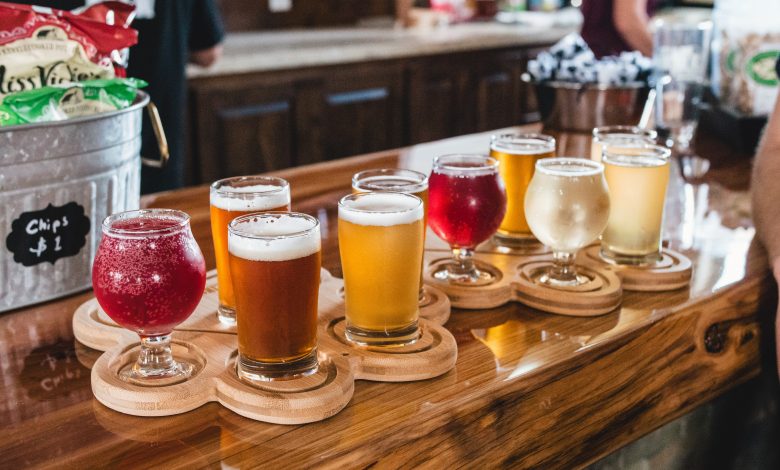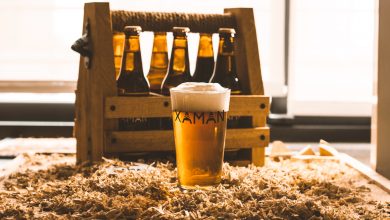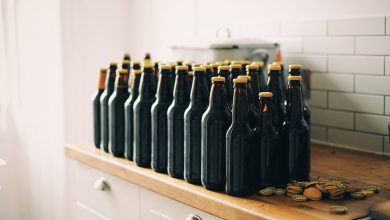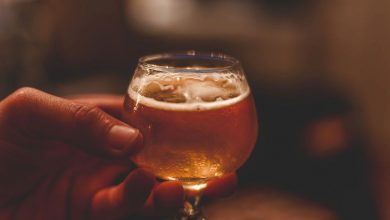Does Beer Go Bad?

It’s natural to wonder if someday bottles of brew that no longer satiate your cravings might fill up your crates. Indeed, all food and beverages tend to wane. They go from fresh and inviting, like a fine wine, to stale and off-putting, like sour vinegar. That’s because aging isn’t just peculiar to living organisms; it happens to consumables as well. However, excellent methods of preservation are effective in delaying the spoilage of these consumables, including your favorite ale.
Beer, of course, can go bad, but it must have stayed way beyond its shelf life for such to occur. It’s the reason why breweries, like Islla St Brewing Company and Cactus Land Brewing Company, ensure that beers retain their unique flavor for as long as possible. Still, it’s only a matter of time before some factors, such as light, oxygen, and bacteria, take their natural course on these beverages.

Factors That Could Make Beer Go Bad
Light
When you expose a beer to excessive light rays, its quality diminishes, and what’s left to drink is an ale with a flat, sulfuric taste. This is as a result of subjecting the light-sensitive hops, which play a crucial role in brewery preservation, to constant UV rays.
Bottle colors can repel the amount of sunlight that infiltrates a beer. Thus, brown bottles are mostly useful in assuaging the impact of the light by wading off radiation below 500 nanometers. Comparatively, green-colored bottles only impede radiation beneath 400 nanometers, while clear bottles, however, give a free pass to light strike. Consequently, brewers employ the use of brown and green bottles to package their beers. Nevertheless, to completely prevent “light striking” your beer, it should be packaged in a can.
Oxygen
Unnecessary exposure of beers to air can spell doom and heartbreak for beer enthusiasts. Therefore, only the right amount of oxygen keeps brews fresh and appealing to taste. In the course of brewing, oxygen can penetrate the beer between the fermenting and packaging stages. Also, oxidation occurs in beers when there’s a rise in the beer’s storage temperature.
Light-colored beers experience worse oxidation as a result of the formation of the trans-2-nonenal compound. This is a reactive organic compound that produces tastes likened to paper or lipstick. This compound adds very little flavor to beers. The smell of light-colored beers is equally affected by oxidation. As a result, the malt fragrance in beer can change into a honey scent due to the organic formation of the 2,3-pentanedione compound. Though this flavor may not be sour, it doesn’t overrule the fact that it shouldn’t be there.
On the other hand, dark beers react differently to oxidation. As time passes by, the rich malt flavor is substituted with sugary sherry cooking wine flavor. This flavor is a consequence of the oxidation of malt flavor molecules in beer (melanoidins), forming the compound benzaldehyde. While the sherry-like smell and flavor are suitable for the Belgian beers and Barley wines, they can alter a beer’s unique taste.

Bacteria
Lastly, amongst the factors affecting the freshness of beer is bacteria. For a long time, the brewing industry has witnessed beer spoilage caused by bacteria. These causal organisms include lactic acid bacteria like Pediococcus damnosus, Lactobacillus brevis, and Lactobacillus lindneri. Others are gram-negative bacteria, such as Pectinatus cerevisiiphilus, Pectinatus frisingensis, and Megasphaera cerevisiae. They ruin beers by increasing turbidity and tartness. These organisms are equally responsible for the unpleasant smell similar to hydrogen sulfide or diacetyl in beers.
Expiration Dates
The shelf life of a beer is otherwise known as the expiration date. Most beers are potent enough to last beyond the expiration date written on the drink. When you keep beers at room temperature, they’re liable to remain pleasant for at least six to nine months after the expiry date. Refrigerating your beers increases the chances of maintaining their flavors for up to two years.
Canned beers kept in the storeroom remain fresh up to half a year plus three months after the expiration date. The refrigerated canned beer lasts six months to two years after the expiration date, just as the bottled and homemade beer under similar circumstances.
One can ascertain whether a beer has grown old on the shelf by looking out for the sound it produces when it’s opened. You can also check out the newness of the package. If it looks rusty and yellowish, then it’s far from new. It must have been in stock for a long time.
One factor that keeps beer in store for longer could be its proximity to the final consumer. Beers that cover long miles before reaching consumers age faster. They must have been exposed to radiation and heat in the course of transportation. Conversely, a local beer retains its newness and fresh taste for longer.
Furthermore, unpopular beer brands or beers that suffer low sales end up being on the shelf for a long time. Purchasing this type may give consumers a skunky taste.

Preserving Beer
Knowing that beer can go stale if exposed to the factors earlier discussed, your curiosity is probably piqued on how to preserve beer.
One of the most effective ways of preserving your beer is by reducing oxidation. You can achieve this by keeping beers in an upright position. That way, the top narrow part of the beer bottle exposes just a bit of the beer to the oxygen that’s available between the brew and the top of the bottle, as opposed to when lying horizontally.
Canned beers are better-enclosed than bottled ones. Therefore, the chances of gases getting in or out are very slim. And as mentioned earlier, this packaging style prevents the impact of a light strike. Nonetheless, the uppermost layer of the can when in a vertical position is larger compared to the bottle. This means canned beer may experience oxidation more swiftly.
Keeping beer in a horizontal position creates a yeast ring within the bottle as a result of the moving dead yeast cells. On the contrary, the vertical position facilitates yeast settling at the bottle base, inherently maintaining the beer’s flavor.
Another means of preserving beer is by storing it at a certain temperature. Heat sours beers. Therefore, store it under cold temperatures by refrigerating them. Highly stimulating beers are to be stored at a temperature of 53-60 degrees Fahrenheit (12-16 degrees Celsius); standard ales require 50-53 degrees Fahrenheit (10-12 degrees Celsius), while it’s okay to keep lighter beers at 44-50 degrees Fahrenheit (7-10 degrees Celsius).
Storing beers in dark places preserves them to an extent. Dark rooms prevent the penetration of damaging ultraviolet rays. You can use your basement to achieve this purpose.
Pasteurization
For pasteurization to take place, beer gets treated by heating to eliminate bacteria that cause spoilage and increase its chances of retaining its flavor and quality during storage. This process heats beer at 131–140 degrees Fahrenheit (55–60 degrees Celsius) for a short time.
Globally, this brewing process is utilized in the mass production of bottled and canned beers. Breweries use 140 degrees Fahrenheit (60 degrees Celsius) as a unit to determine the extent of the pasteurization process. Therefore, one pasteurization unit (PU) means the beer has undergone one minute of pasteurization at 140 degrees Fahrenheit.
The pasteurization of bottled and canned beers is done by passing them through a long tiny chamber where hot water is dispersed over the containers for a specific duration before cooling them. Sterilization and pasteurization serve different purposes. In sterilization, intense heat is applied to elongate the shelf life of the brew. Pasteurization, on the other hand, uses a milder form of heating to preserve the unique quality of beer.
The Impacts of Humidity on Cellaring Beer
As explained earlier, cellaring a beer must be done under cold temperature and in a dark room. However, humidity influences a beer’s taste. Thus, it’s essential to know the appropriate humidity levels to store your bottles of beer.
A highly humid environment, for example, above 70 percent, can make the beer grow mold. This affects the general appearance of the beer bottle, causing its stopper to rust, fading off the labels, and making mold cling to the beer bottle. When storing beer, the humidity of the storeroom should oscillate between 50 percent and 70 percent. A beer that has been uncorked should be consumed immediately. Otherwise, it will become flat, rendering it unenjoyable.
In conclusion, beers do go bad. However, you have a chance at elongating their shelf life by adhering to their preservative measures. A fresh beer would always soothe the throat better than a brew that’s been left untouched for most of its life.



